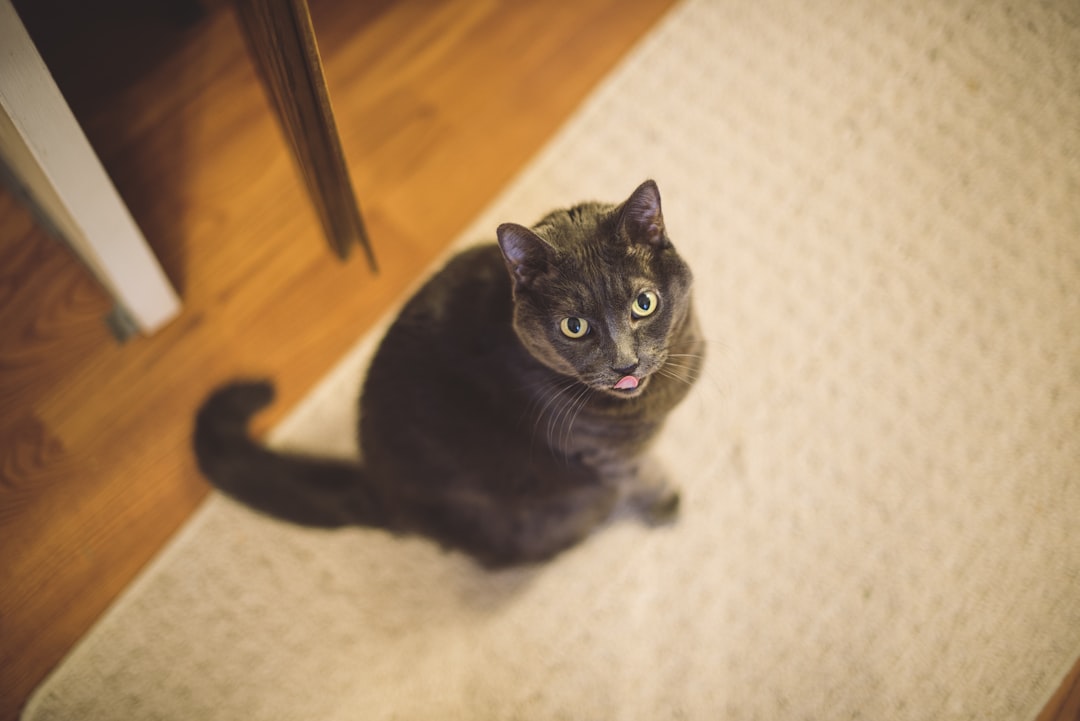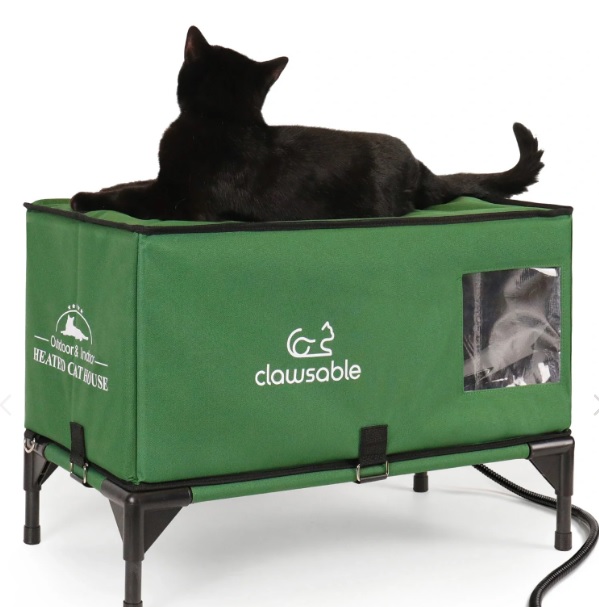Every cat owner wants to ensure their feline friend’s safety while allowing them some independence. A cat collar plays a crucial role in this equation, providing both identification and a measure of security. Not only do collars help recover lost cats, but specific features like reflectivity can enhance visibility during low-light conditions. As you explore the wide variety of collars available, understanding their function and benefits becomes essential for making the best choice for your beloved pet. Ultimately, equipping your cat with a collar not only enhances their safety but contributes to their overall well-being.
The Importance of Collars for Cat Safety
A cat collar plays a crucial role in ensuring the safety and well-being of your feline friend. Here are some key reasons why equipping your cat with a collar is essential:
Identification: A cat collar can carry an ID tag, providing vital information such as your contact details. This increases the likelihood of a lost cat being returned to you quickly.
Visibility: Collars, especially those with reflective materials or LED lights, enhance your cat’s visibility during low-light conditions, reducing risks during nighttime wanderings.
Quick release: Many collars come with a breakaway feature that prevents choking or injury if your cat gets snagged on something while exploring.
Compliance: In some areas, local regulations may require pets to wear collars, serving to promote responsible pet ownership.
In summary, a cat collar significantly contributes to your cat’s safety by ensuring proper identification, boosting visibility, and providing essential escape mechanisms. Prioritizing a collar not only protects your cat but also gives you peace of mind.
Types of Collars for Cats
Selecting the right cat collar is essential for your feline’s safety and comfort. Here are the common types of collars you can choose from:
Standard Collars: These are adjustable and come in various materials like nylon or leather. They’re perfect for daily use but should be checked regularly to ensure a comfortable fit.
Breakaway Collars: Designed for safety, these collars include a mechanism that allows the collar to disengage under pressure. This feature prevents choking or injury if your cat gets caught on something.
Reflective Collars: These collars enhance visibility during nighttime, making it easier for you to spot your cat in the dark. They often come with bright colors and reflective materials.
LED Collars: Equipped with small lights, LED collars are another excellent option for nighttime safety. They illuminate your cat, ensuring they’re easily seen by you and passing vehicles.
Training Collars: Used for training purposes, these collars typically have a unique design to discourage unwanted behavior. However, they should only be used under guidance.
By understanding these options, you can choose the best cat collar that meets your pet’s needs and enhances their safety.
Features to Look for in a Cat Collar
Selecting the right cat collar is vital for both safety and comfort. Here are key features to consider:
Adjustability: Choose a collar that can be easily adjusted to fit your cat’s neck comfortably without being too tight or loose.
Breakaway Mechanism: A breakaway collar ensures your cat can escape if it becomes tangled, reducing the risk of injury.
Material: Look for lightweight and durable materials like nylon or cotton. These materials are comfortable and suitable for daily wear.
Visibility: Opt for collars that include reflective strips or bright colors, enhancing visibility during low-light conditions.
ID Tag Holder: Ensure the cat collar has a secure place for ID tags to include your cat’s name and your contact information.
Bell Option: Consider collars with a bell to alert wildlife and prevent your cat from becoming a successful hunter.
By keeping these features in mind, you can choose a cat collar that prioritizes your feline’s safety and comfort while offering peace of mind.
The Role of Identification in Lost Cat Recovery
When a cat goes missing, having proper identification is crucial for its safe return. A cat collar plays a vital role in ensuring your feline friend is easily identifiable. Here are key points to consider:
Personal Information: Attach an ID tag to your cat collar with your contact information, including your name, phone number, and address. This simple step increases the chances of someone contacting you if they find your cat.
Microchipping: While a cat collar provides immediate visibility, microchipping offers long-term security. A microchip, often about the size of a grain of rice, contains a unique ID number linked to your information in a database.
Combining Strategies: Use both a cat collar with an ID tag and microchipping for optimal safety. This combination makes it easier for someone to contact you directly while also ensuring your pet can be identified even if the collar comes off.
In summary, integrating effective identification into your cat’s safety strategy can drastically enhance the chances of a successful recovery in case of loss. Remember, a cat collar is not just an accessory; it’s a lifesaver.
Benefits of Reflective or LED Collars
When it comes to ensuring your cat’s safety, reflective or LED collars offer significant advantages. Here’s a quick look at their key benefits:
Increased Visibility: Reflective collars bounce back light, making your cat more visible in low-light conditions. This feature is crucial during early morning or evening walks.
Enhanced Safety: LED collars illuminate your cat’s path, helping you spot them easily in the dark. This is especially useful if your cat tends to roam outdoors.
Peace of Mind: Knowing your cat has a collar that stands out provides reassurance. It reduces the worry of losing sight of your pet during nighttime adventures.
Stylish Options: Many reflective and LED collars come in various colors and designs, allowing you to express your cat’s personality while prioritizing their safety.
Quick Comparison
| Feature | Reflective Collars | LED Collars |
|---|---|---|
| Visibility | ✔️ | ✔️ |
| Light Source | No | Yes |
| Battery Required | No | ✔️ |
| Durability | Generally high | Varies by model |
Incorporating a cat collar that offers these benefits can significantly enhance your cat’s safety during nighttime escapades. Consider investing in reflective or LED options to keep your feline friend secure!
Collars and Microchipping: What You Need to Know
When it comes to cat safety, combining a cat collar with microchipping provides an extra layer of protection. Here’s what you need to know:
- Identification: A cat collar typically features a tag that includes your contact information. This is crucial if your cat ever gets lost.
- Microchipping: Microchipping is a permanent identification method. A tiny chip, inserted under your cat’s skin, can be scanned by shelters and vets, providing your pet’s details.
Comparison of Collars and Microchipping
| Feature | Cat Collar | Microchipping |
|---|---|---|
| Visibility | Yes, visible from a distance | No, requires a scanner |
| Information | Can hold tags for owner info | Contains unique ID in database |
| Cost | Generally inexpensive | Higher initial cost but lasts a lifetime |
| Update Info | Easy to change contact details | Requires contacting the registry |
Why Use Both?
- Dual Protection: A cat collar shows immediate identification while microchipping ensures permanent records.
- Increased Chance of Recovery: Using both increases the likelihood of reuniting with your lost feline friend.
In conclusion, a cat collar paired with microchipping offers the best combination for ensuring your pet’s safety.
How to Introduce a Collar to Your Cat
Introducing a cat collar to your feline friend requires patience and a gentle approach. Here’s how to make the process smooth and stress-free for both you and your cat:
Choose the Right Time: Start when your cat is relaxed, like after a meal or a long nap.
Familiarization:
- Allow your cat to sniff the collar before putting it on.
- Place the collar near their sleeping area or food bowl to create a positive association.
Gradual Introduction:
- Begin by placing the collar around your cat’s neck without fastening it. Let them get used to the sensation.
- A few minutes each day can help them adjust slowly.
Positive Reinforcement:
- Reward your kitty with treats and praise once they wear the collar.
- Keep the experience positive!
Monitoring:
- Watch for any signs of discomfort or irritation.
- Gradually increase the duration the collar is worn.
By following these steps, you can successfully introduce a cat collar, ensuring safety and comfort as your cat adapts to their new accessory.
Maintaining and Checking Your Cat’s Collar
Regular maintenance and checks of your cat’s collar ensure both safety and comfort for your furry friend. Here are some essential tips:
Inspect the Fit: A well-fitted cat collar should allow you to slide two fingers between the collar and your cat’s neck. Check regularly, especially if your cat is young or growing.
Check for Wear and Tear: Look for frayed edges, broken buckles, or faded tags. A damaged cat collar can pose risks, so replace it if needed.
Cleanliness Matters: Maintain a clean collar by washing it occasionally. Use mild soap and water, ensuring it dries thoroughly to prevent skin irritations.
Tag Verification: Ensure ID tags on the collar are up to date. Your cat’s collar is vital for identification, so make sure contact information is current.
Frequency of Checks: Aim to check your cat’s collar weekly. This habit will help you catch any problems before they become serious.
Following these steps ensures that your cat collar remains a reliable tool for safety and identification.
Legal Considerations Around Cat Collars
When it comes to your furry friend, opting for a cat collar entails more than just a fashion choice. There are several legal aspects to keep in mind:
Local Regulations: Some jurisdictions require pets, including cats, to wear identification collars. Familiarize yourself with local laws to avoid fines.
Identification Requirements: Having your cat wear a collar with an ID tag is not only a good practice but may also be mandated in certain areas. This typically includes:
- Your pet’s name
- Your contact information
- Current vaccination tags
Leash Laws: Many places require that cats remain indoors or be secured with a cat collar and leash when outside. Ensure you understand these restrictions to keep your pet safe and legal.
Microchipping: While microchipping is voluntary, certain territories encourage the use of a cat collar in conjunction with a microchip for enhanced identification.
In summary, always check your local regulations about cat collars and ensure you’re complying. This proactive approach not only keeps you on the right side of the law but also enhances your pet’s safety.
Tips for Choosing the Right Collar for Your Cat
Selecting the perfect cat collar is essential for both safety and comfort. Here are some valuable tips to guide you:
- Measure Correctly: Use a soft tape measure to determine your cat’s neck size. A snug fit allows for two fingers to slide under the collar.
- Choose the Right Material: Look for lightweight, durable materials such as nylon or cotton. These options are comfortable and resistant to wear and tear.
- Safety Features: Opt for a breakaway collar that releases under pressure to prevent choking hazards.
- Reflective or LED Options: Consider collars with reflective materials or integrated LED lights for enhanced visibility during nighttime walks.
- Personalization: Select collars that allow you to attach an ID tag with your cat’s name and your contact information.
- Style Matters: While functionality is crucial, you can also find collars in various colors and patterns to match your cat’s personality!
Taking these tips into account will help ensure you select a cat collar that is both safe and stylish for your furry friend.



